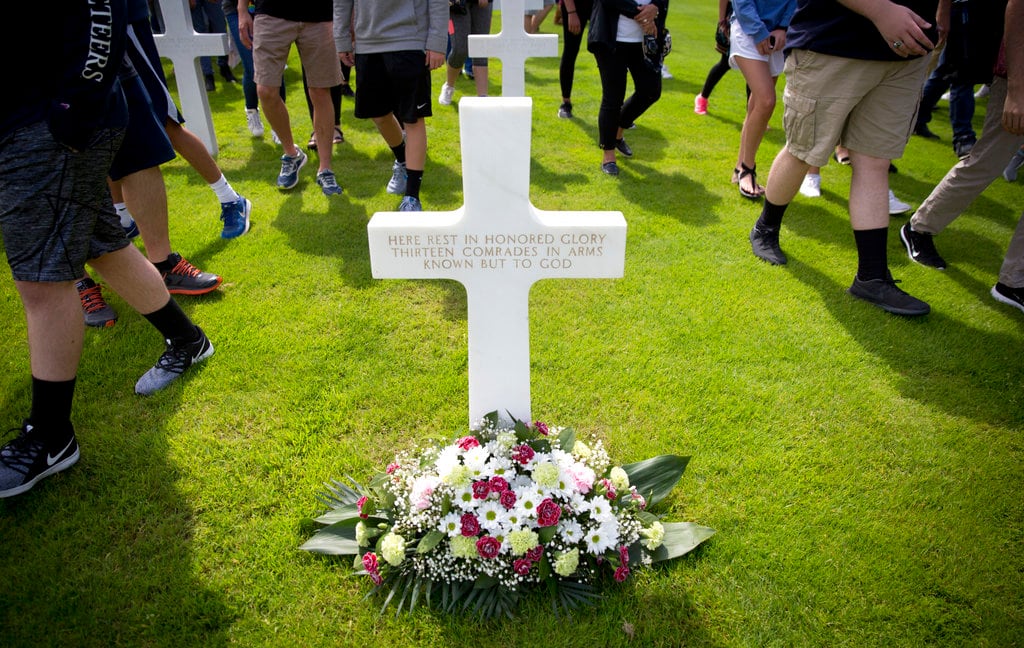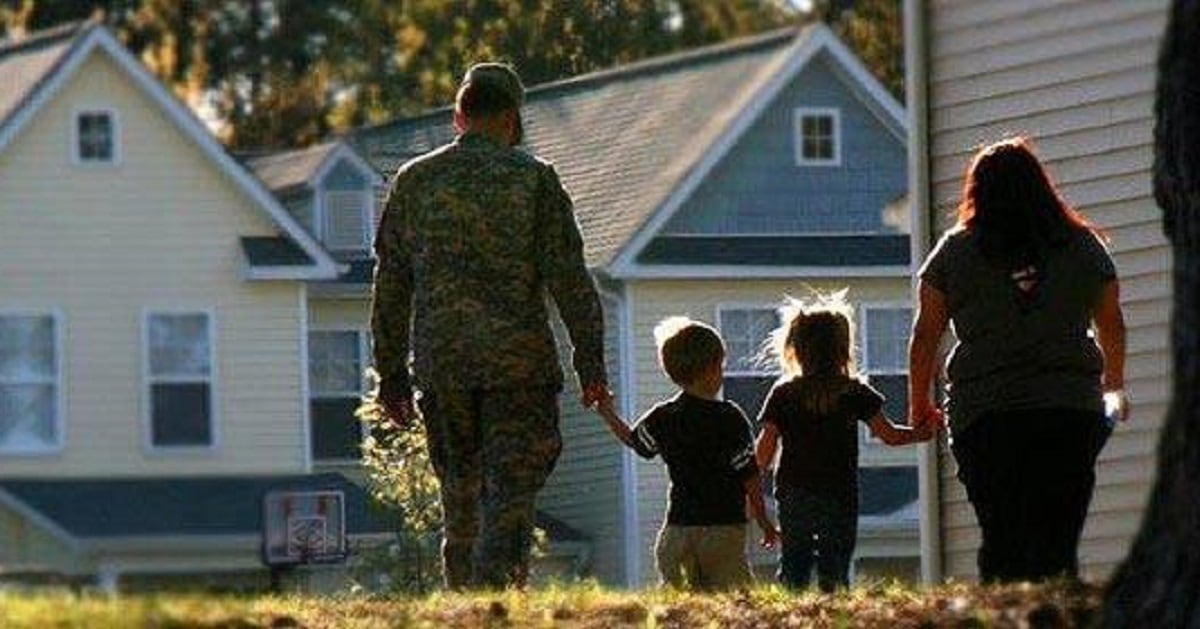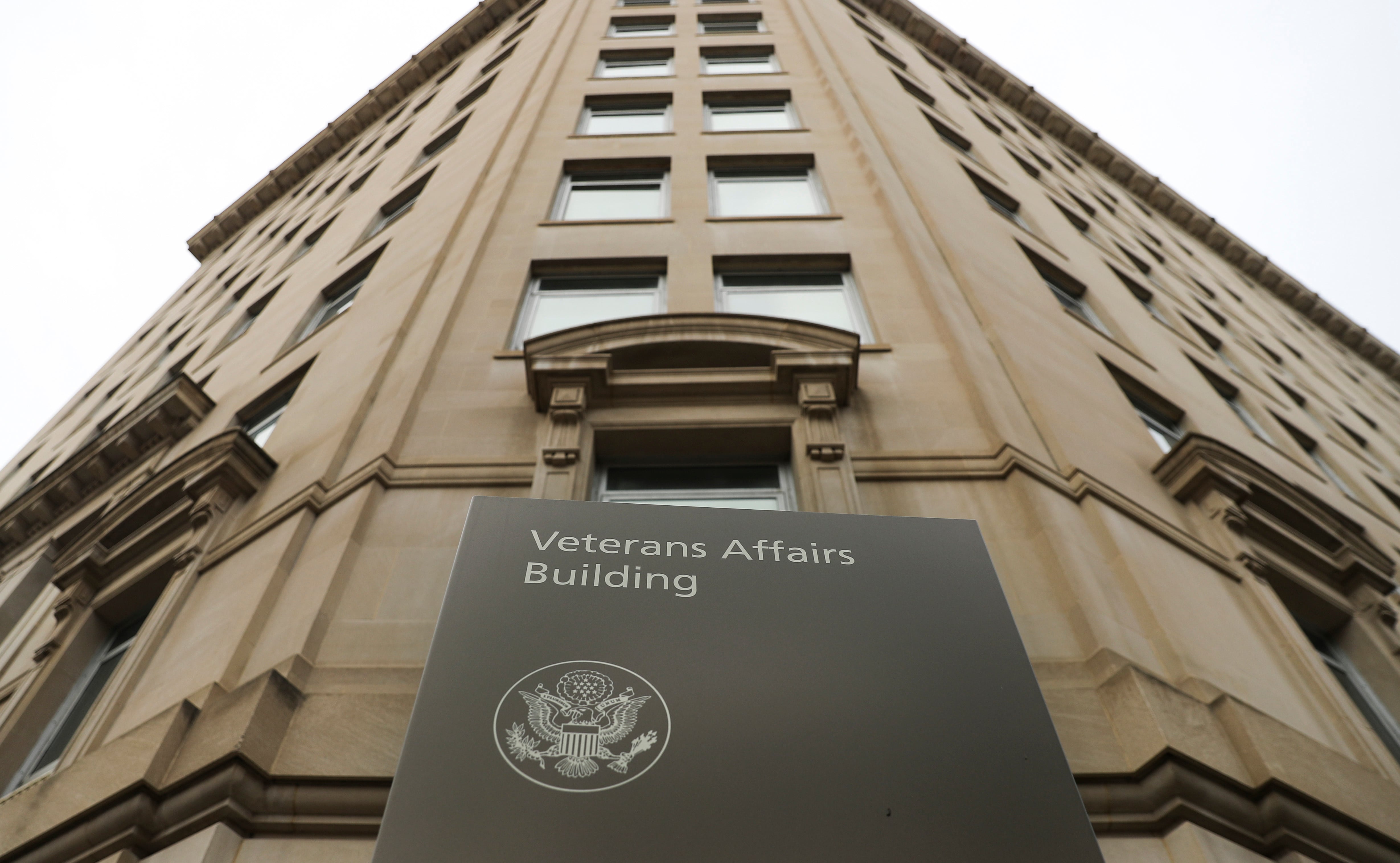An upcoming rotation at the Joint Readiness Training Center in Louisiana could determine the fate of the Army's only airborne brigade combat team in the Pacific theater.
Soldiers from 4th Brigade Combat Team, 25th Infantry Division, will kick off a rotation at the Fort Polk, Louisiana-based training center in mid-February. In the balance is a pending decision about what the brigade, stationed at Joint Base Elmendorf-Richardson, Alaska, will look like in the future as the Army shrinks the active-duty force to an end-strength of 450,000.
As part of sweeping cuts being made across the Army due to budget cuts, the Army in July announced the brigade would be converted into a battalion-sized task force, bringing the unit from about 4,000 soldiers down to about 1,050. Lawmakers from Alaska, led by Republican Sen. Dan Sullivan, have pushed back against the cut, arguing that the brigade, with its airborne and extreme cold-weather fighting capabilities, provides the Army with an invaluable asset. Senior Army leaders also have expressed concern that a force of about 1,050 soldiers is too small to conduct a joint forcible entry operation on its own.
Army Chief of Staff Gen. Mark Milley has promised Sullivan that he will re-examine the original decision, said Maj. Gen. Bryan Owens, commanding general of U.S. Army Alaska, on Wednesday.
To help guide the decision, soldiers from 4th BCT will kick off their JRTC rotation with a joint forcible entry exercise, Owens said.
"We're looking at validating a unit of about 1,600 in our JRTC rotation, and that'll give us a good look at what we really need to maintain the capabilities we have now but scoped down a bit," he said. "We're working on a solution that does not lose the capabilities we have now, and the JRTC rotation is part of the assessment."
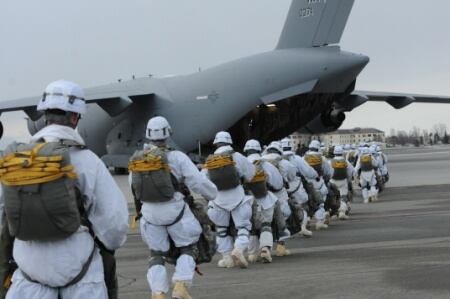
Paratroopers with U.S. Army Alaska's 4th Infantry Brigade Combat Team, 25th Infantry Division, board a C-17 Globemaster III aircraft during Exercise Spartan Pegasus in February 2015 at Joint Base Elmendorf-Richardson, Alaska.
Photo Credit: Sgt. 1st Class Jeffrey Smith/Army
A joint forcible entry operation calls for troops to seize and hold an airfield or other hostile area, which is then used to allow for subsequent troops and materiel to flow into the area.
"The chief of staff has some hard decisions here," Owens said. "This is important to us, but in the end, when the chief makes his decision, we'll move out and shape this airborne task force."
In addition to airborne capabilities, soldiers from 4th BCT — and the rest of the troops stationed in Alaska, about 11,000 in all — give the Army critical cold-weather fighting capabilities, Owens said.
"You have a force here that is trained and ready and can go fight and survive and win in an extreme cold weather environment," Owens said, speaking to reporters at the Pentagon from Fort Wainwright, Alaska, where temperatures were a relatively comfortable 14 degrees.
Also known as Arctic Warriors, soldiers in U.S. Army Alaska are well versed in the challenges of fighting in bone-chilling weather, Owens said.
Just two weeks ago, the temperature dropped to 24 degrees below zero during morning PT, he said.
"In extreme cold weather, it's unforgiving," Owens said. "You make a mistake, you pay for it with limbs, digits, could be your life."
In extreme cold weather, "things slow down," Owens said.
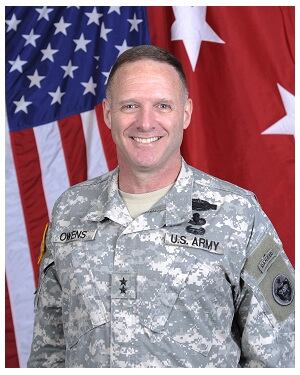
Maj. Gen. Bryan Owens took command of U.S. Army Alaska in July 2015.
Photo Credit: Army
Those types of temperatures also change the dynamics for metals and rubbers on soldiers’ equipment, and it affects ballistics, too, he said.
For example, soldiers seeking comfort in a warming tent cannot bring their weapons inside with them, Owens said. If the metal "sweats" and then refreezes when the soldier goes back outside, the trigger mechanism could lock up, he said.
"Something as simple as that would get you in trouble," he said.
Soldiers also must be careful when firing artillery or mortars.
"The heat from the rounds can crack the bases, so we have to be careful to make sure you don't push too many rounds out of the tubes as you fire," Owens said. "There are a lot of things that we learn on our ranges here."
To maintain their edge, the Army has stepped up its Arctic training.
In February 2014, about 40 paratroopers from the 4th BCT jumped into Deadhorse, about 500 miles north of Fairbanks in Alaska's North Slope Borough. It was the unit's first airborne operation north of the Arctic Circle. Three months later, about 25 soldiers from the 6th Engineer Battalion arrived in Deadhorse for their own three-day exercise.
More recently, in November, the Army deployed its Stryker vehicles north of the Arctic Circle for the first time. About 40 soldiers from 1st Stryker Brigade Combat Team, 25th Infantry Division, also part of U.S. Army Alaska, traveled to Deadhorse for their own exercise.
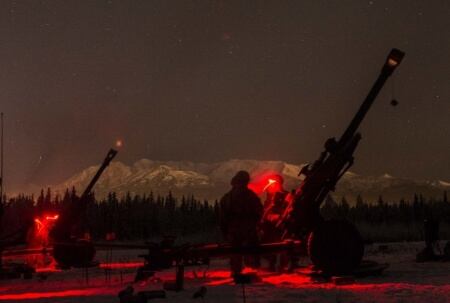
Paratroopers with the 2nd Battalion, 377th Parachute Field Artillery Regiment, 4th Infantry Brigade Combat Team, 25th Infantry Division, fire 105 mm howitzers during a night-fire training event in December 2014 at Joint Base Elmendorf-Richardson, Alaska. Paratroopers of the unit used the dark and Arctic conditions to gain proficiency in operating in austere environments.
Photo Credit: Staff Sgt. Daniel Love/Army
The training events are part of the Army's ongoing efforts to exercise units' rapid deployment capabilities but also provide an opportunity t
o demonstrate the Army's ability to operate in extreme cold weather.
In Deadhorse, the record February low temperature is 57 degrees below zero; in January 1989, nearby Prudhoe Bay registered a wind-chill of a whopping 96 degrees below zero.
The next such training event, called Arctic Pegasus or Spartan Pegasus, depending on which brigade is participating, is scheduled for March 2017, Owens said. Planning is still in the early stages, but the exercise likely will include AH-64 Apache helicopters, and soldiers will be tasked with rescuing the crew of a downed aircraft, he said.
"The intent is to operate for a couple of days at minus-60 or minus-50, whatever the temperature happens to be at the time," he said.
The Army's emphasis on Arctic operations comes as Russia plans to permanently station one of its military units in the Arctic by 2018, according to the Associated Press.
Russian Defense Minister Sergei Shoigu told Russian news agencies in October that the "creation and arming" of the Arctic military unit should be completed by 2018. He also said Russia is building several new bases in the Arctic as well as rebuilding six Soviet-era air bases there, the AP reported.
Owens downplayed a specific focus on Russia.
"We do know what the Russians are doing, they're building up their Arctic brigades … [but] at my level, what I do is provide trained and ready forces," he said. "We don't train against a specific threat. We train against any threat. It doesn't matter where. We have to have trained and ready forces. We have to have our equipment ready."
Michelle Tan is the editor of Army Times and Air Force Times. She has covered the military for Military Times since 2005, and has embedded with U.S. troops in Iraq, Afghanistan, Kuwait, Haiti, Gabon and the Horn of Africa.

